Labrador Retriever
Adobe Stock/Parilov
The Labrador Retriever is one of the most popular dog breeds in the U.S., and for good reason. Labs are medium- to large-breed sporting dogs that are active and friendly, making them great family dogs.
Labrador Retrievers weigh 55–80 pounds on average, with females on the lower end of this range. Typically, their height is 21–25 inches. They have a wide skull and nose, deep chest, strong tail, and muscular build. Labs come in three colors: yellow, black, and chocolate.
Caring for a Labrador Retriever
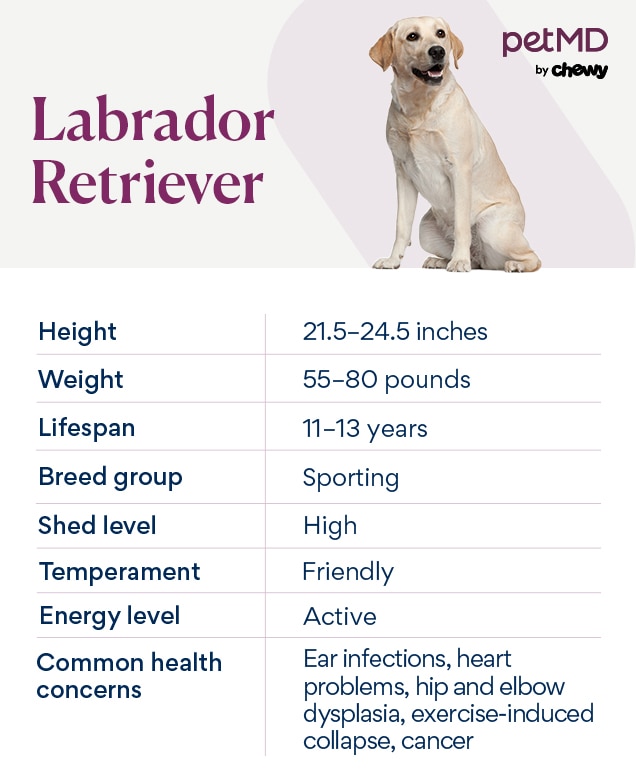
Labradors tend to be highly affectionate toward people, even strangers, and do exceptionally well with other dogs and with children. However, supervision is still important when first introducing a Lab to these family members.
Labrador Retrievers have a double coat that repels water. Due to this double coat, they shed a lot, and frequent brushing to manage the shedding is required.
Labrador Retrievers love water—in fact, the breed got their start working alongside fishermen, according to The Labrador Retriever Club. Today, they are great companions for families who like to spend a lot of time outdoors swimming, hiking, or hunting.
Labrador Retriever Health Issues
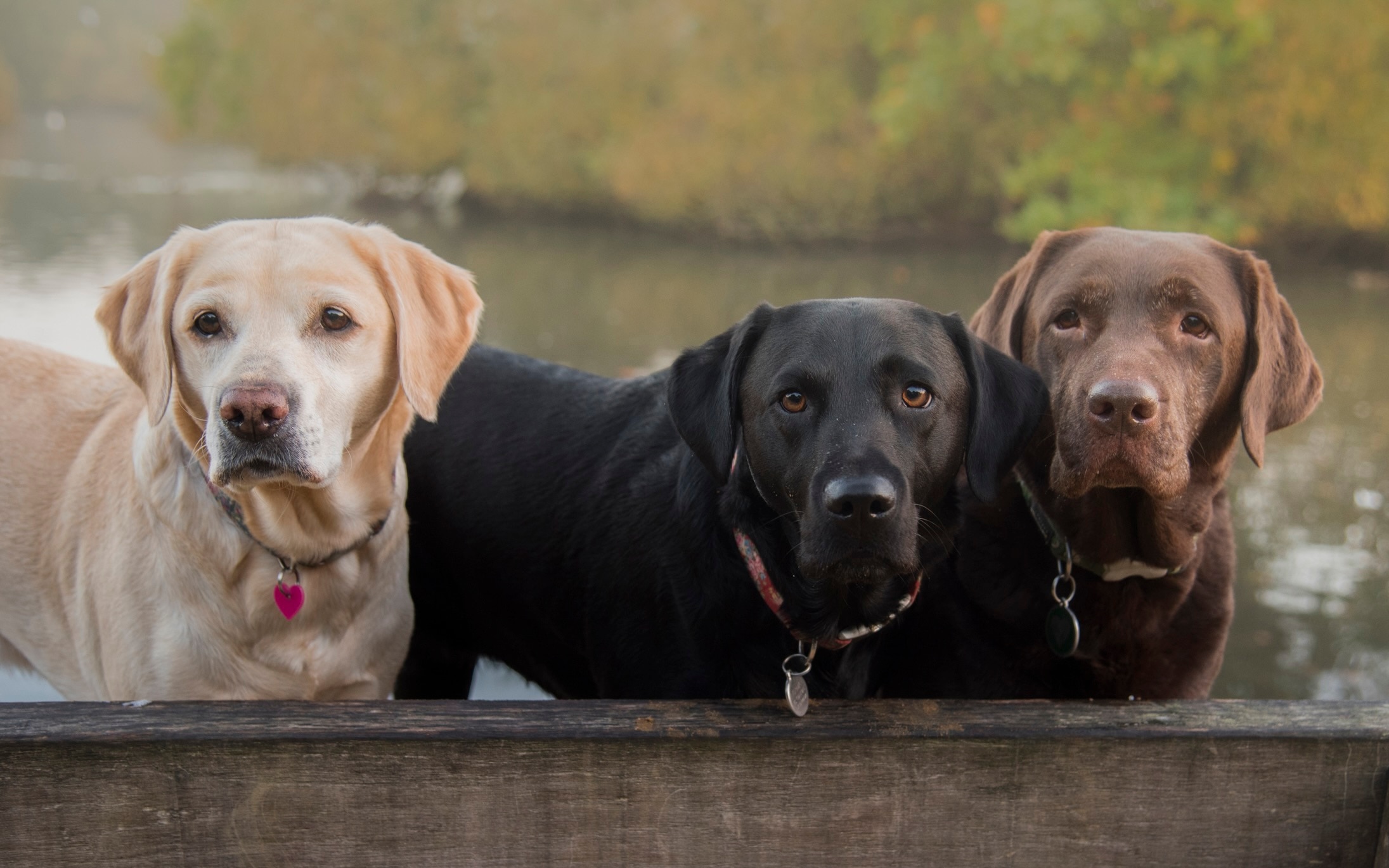
The average Labrador Retriever lifespan is 11–13 years. They are generally a healthy breed, but there are some potential health issues pet parents should be aware of.
Ear Infections
Labrador Retrievers are prone to ear infections for a couple of reasons:
-
They have ears that hang down loosely, which can trap moisture and wax. This leads to inflammation and infection within the ear canal.
-
Most Labrador Retriever dogs love swimming, but water that gets in their ears can lead to an ear infection.
Symptoms of an ear infection can include:
-
Redness of the ear canal
-
Brown or yellow debris in the ear canal
-
Rubbing ears on carpet/furniture
-
Odor in ears
-
Pawing at ears
To minimize the risk of ear infections in Labrador Retrievers, clean their ears with a vet-recommended ear cleaner that contains a drying agent, such as Epi-Otic® Advanced). Do this every two to three weeks for maintenance, and also after swimming or a bath.
Tricuspid Valve Dysplasia
The tricuspid valve pumps blood on the right side of the heart from the right atrium into the right ventricle. Labrador Retrievers with tricuspid valve dysplasia (TVD) have a valve that doesn’t function properly and allows blood to leak backward into the right atrium. Over time, the right atrium and right ventricle become enlarged.
Labrador Retrievers with TVD may or may not have a heart murmur that can be heard during a routine physical exam. They can be asymptomatic or show signs of right-sided heart failure, which include:
-
Fluid in the abdomen
-
Distended abdomen
-
Difficulty breathing
-
Rapid heart rate
Surgery can sometimes be performed to replace the tricuspid valve with a prosthetic one from a cow or a pig. Heart medications are often needed to manage this condition.
The prognosis can vary based on the severity of the disease. Some Labradors with TVD can live a normal lifespan.
Elbow Dysplasia
Elbow dysplasia encompasses several inherited orthopedic conditions that ultimately lead to degenerative joint disease (DJD) within the elbow. Any of these conditions can cause lameness and pain in the affected forelimb, especially after exercise.
Elbow dysplasia can occur in one or both elbows, and the condition is often diagnosed via X-rays or advanced imaging (CT scans). Surgery is needed for treatment.
Hip Dysplasia
Hip dysplasia is an inherited orthopedic condition where the head of the femur does not sit snugly in the hip joint. As a result, the bone rubs against the hip socket, leading to arthritis.
Hip dysplasia can develop in one or both hip joints. Symptoms include:
-
Lameness
-
Slowness to rise from a lying-down position
-
Bunny-hopping gait when running
-
Reluctance to run, jump, or go up or down stairs
-
Holding the affected leg out to the side when sitting up
Treating hip dysplasia varies depending on the severity. In some cases, hip dysplasia can be managed through joint supplements, medications, and reduced activity. In other cases, a dog may undergo surgery to correct hip dysplasia.
Centronuclear Myopathy
Centronuclear myopathy (CNM) is a rare congenital disease that affects the skeletal muscle. This condition impairs reflexes in the hind limbs.
Signs include an abnormal gait and an inability to perform physical exercise, like go on a walk or a run. The muscles become weak, especially in colder climates.
Usually, symptoms first arise in Labrador Retriever puppies 2–5 months old. By age 1, the dog’s head, neck, and leg muscles generally become atrophied (diminished), which causes weakness. The condition tends to become stable (meaning it won’t continue to worsen) after 1 year of age.
A muscle biopsy is needed to diagnose this condition, and genetic therapy is the treatment of choice. Dog DNA testing is available to determine if a puppy carries the genetic mutation for CNM. Reputable Labrador Retriever breeders will have their dogs tested before breeding.
Exercise-Induced Collapse
Exercise-induced collapse (EIC) is an inherited neuromuscular disease that first affects the hind limbs.
A Labrador Retriever with EIC will have episodes of decreased muscle tone in the hind legs after exercise or excitement. The legs will suddenly become weak, which can lead to a lack of coordination when walking and even collapse.
Dogs usually recover but can have more episodes of EIC later on. During an episode, a dog’s temperature can reach a life-threatening 107 F. Labrador Retrievers with EIC usually start having episodes around 1 year of age. Your veterinarian can help you determine the best action plan if your dog experiences EIC.
A DNA test can be done to detect whether a Labrador Retriever puppy carries the genetic mutation and is at risk for EIC. Dogs that have the genetic mutation should not be bred.
Hemangiosarcoma
Hemangiosarcoma (HAS) is an aggressive form of cancer in dogs that most often originates in the spleen, liver, or heart. It forms a blood-filled tumor that can rupture at any time, causing a dog to bleed internally, which is life-threatening.
Some clinical signs include:
-
Weakness
-
Difficulty breathing
Hemangiosarcoma can spread quickly to other areas of the body and at first may not be detectable with imaging (X-rays, ultrasound, or CT/MRI).
Progressive Retinal Atrophy
Progressive retinal atrophy (PRA) is a disease of the eye. The retina slowly degenerates over time, leading to blindness. PRA can be diagnosed with an eye exam. It usually develops in Labrador Retrievers between 3 and 9 years old.
There is no cure for PRA, but blind dogs can live long and happy lives with the help of their pet parents.
What To Feed a Labrador Retriever
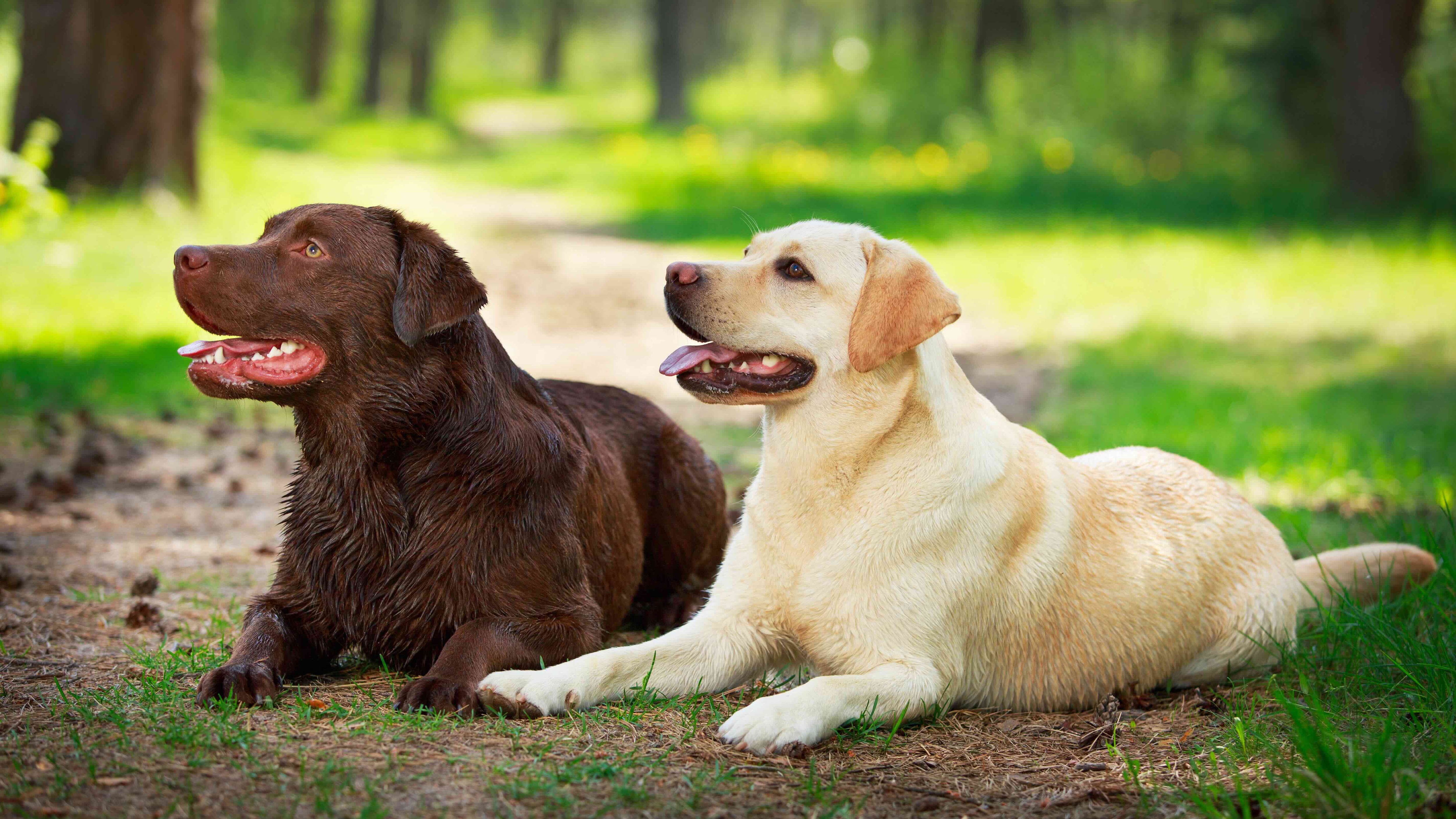
Labrador Retriever puppies should be fed a high-quality puppy food made for large breeds until they are 1 year old. Once they reach adulthood, they need to transition to a high-quality adult food for large breeds.
Make sure that whichever dog food you choose meets the nutritional standards set by the Association of American Feed Control Officials (AAFCO). Some brands, such as Royal Canin®, make Labrador-specific dog food that’s scientifically formulated to meet the breed’s nutritional needs.
How To Feed a Labrador Retriever
Labrador Retrievers do best with twice-daily feedings, morning and evening. This breed loves to eat and are known to eat very quickly.
If you notice your dog gobbling food down, consider a slow-feeder bowl. This will regulate the amount of food your dog can eat at one time and prevent regurgitation and stomach upset that can happen if they eat too quickly.
How Much To Feed a Labrador Retriever
Labrador Retriever puppies have rapid growth spurts, so feed them a high-quality puppy formula when they are under 12 months of age. Puppy food will provide the extra calories they need to grow to their full potential. Follow the feeding guidelines on the back of the bag of large-breed puppy formula based on age and expected body weight.
Once your Labrador Retriever is 1 year old, switch to a high-quality large-breed adult formula—which has fewer calories than the puppy version—to prevent unwanted weight gain.
To determine how much to feed your Labrador Retriever, check the feeding guidelines on the bag. You can also chat with your veterinarian to find the appropriate portions to help keep your dog at a healthy weight.
Nutritional Tips for Labrador Retrievers
Dogs eating an AAFCO-compliant diet should receive all necessary nutrients and won’t need extra supplementation. However, Labradors with certain health considerations may benefit from dog supplements in their diet.
For example, supplements like Nutramax® Dasuquin® and Cosequin® can help a Labrador Retriever that has hip or elbow dysplasia and help slow the onset of arthritis. Fish oil supplements can also help reduce joint inflammation while promoting coat and skin health.
Never give your dog a supplement without speaking to your veterinarian first.
Behavior and Training Tips for Labrador Retrievers
Labrador Retriever Personality and Temperament
The Labrador Retriever temperament is part of what makes them such a popular pet. They are typically affectionate toward children, other pets, and even strangers.
Though Labradors get along with nearly anyone, their high energy and strong tails can be dangerous for toddlers and other young children who can get accidentally knocked over. Always supervise playtime between kids and dogs of any breed.
Labrador Retriever Behavior
Labrador Retrievers are prone to eating things that they shouldn’t—especially as puppies. They may try to eat socks, shoes, furniture, and other items, or get into the trash. Pet parents must keep a watchful eye on Lab puppies and dedicate time to train them on what they can and cannot eat.
These friendly dogs also love to play and remain highly energetic throughout most of their lives. They need lots of exercise and attention to make them happy. Generally, each Labrador Retriever needs an hour of exercise every day, though this varies based on your dog’s age and health.
Labrador Retriever Training
Labrador Retriever puppies are very energetic and will grow into athletic dogs. It’s important to take the time to train them correctly when they are young.
It is highly recommended that Labrador Retriever puppies participate in puppy training and obedience training classes. They need to be socialized with different people and pets, so they get used to being around others at a young age.
Be sure to quickly correct any bad puppy behaviors that arise—such as biting, chewing on objects, and trying to eat random items—so these behaviors do not continue and worsen over time.
Labrador Retrievers are smart and eager to please. Because of this, they often go through specialized training to become service dogs or participate in search and rescue. They also make great therapy dogs.
Fun Activities for Labrador Retrievers
-
Scent work
-
Tracking
-
Swimming
-
Hiking
Labrador Retriever Grooming Guide
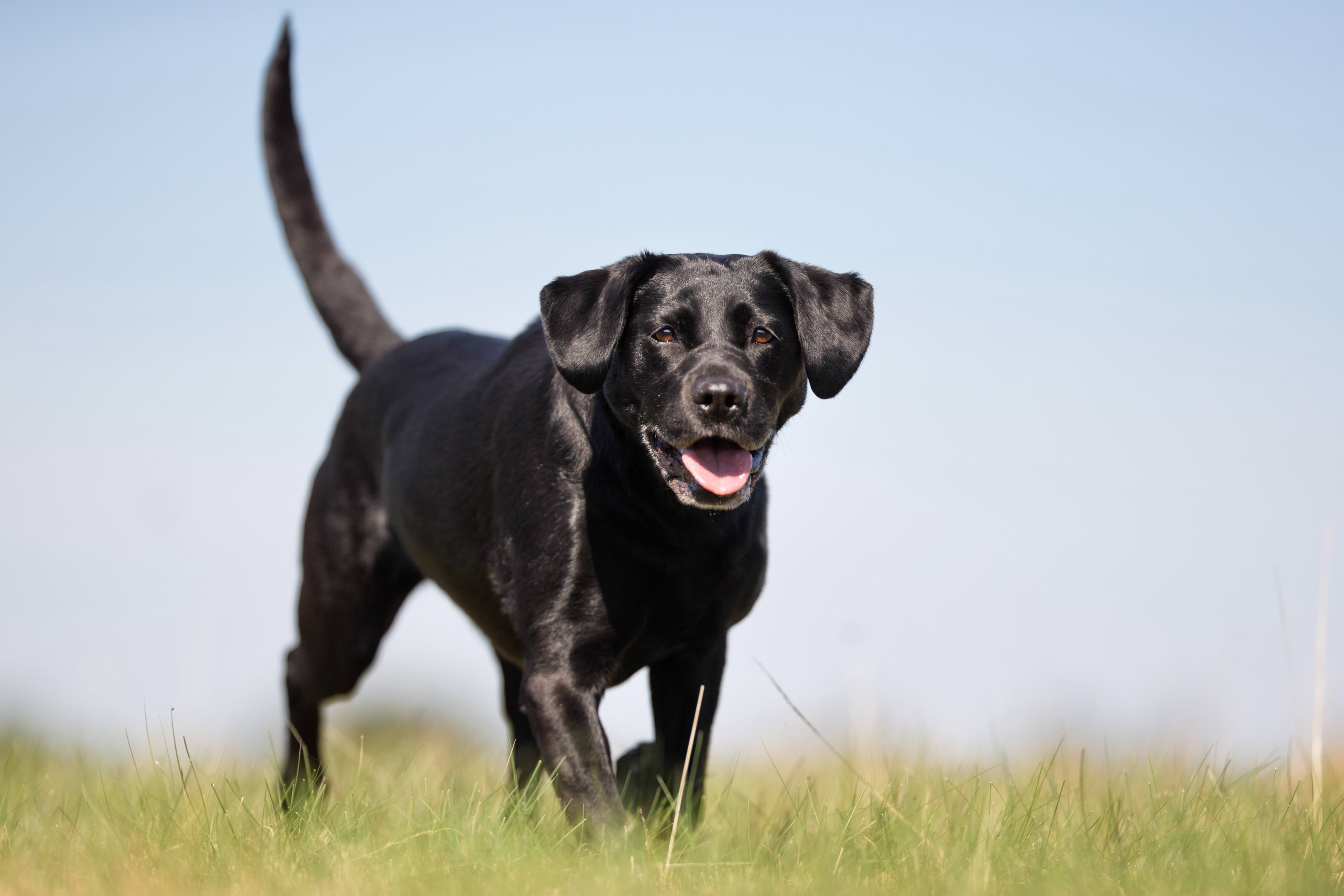
Labrador Retrievers don’t require a lot of grooming, but they do shed a lot. Deshedding and brushing your dog will be important parts of your grooming routine.
Skin Care
Labrador Retrievers do not require any specialized skin care, but it’s important to ensure that they are fully dried after swimming and baths to avoid skin infections. Talk to your vet if you notice any changes in your dog’s skin.
Coat Care
Labrador Retrievers have a thick double coat that is water-repellent. Due to this double coat, Labrador Retrievers shed a lot and require frequent brushing (two to three times each week) to manage the shedding. But even with regular brushing, you should expect loose hair in your home.
Labradors also need an occasional bath to keep their skin and coat clean. Ask your vet how often you should bathe your dog.
Eye Care
Because the Labrador Retriever dog breed is susceptible to PRA, take note of any changes in your dog’s eyes or vision. Talk to your vet if you notice anything out of the ordinary.
Ear Care
Due to their floppy ears and love for swimming, Labrador Retrievers are prone to ear infections. It’s helpful to routinely clean their ears every two to three weeks with an ear cleaner that contains a drying agent, as well as after baths and swimming, to minimize the risk of ear infections.
Considerations for Pet Parents
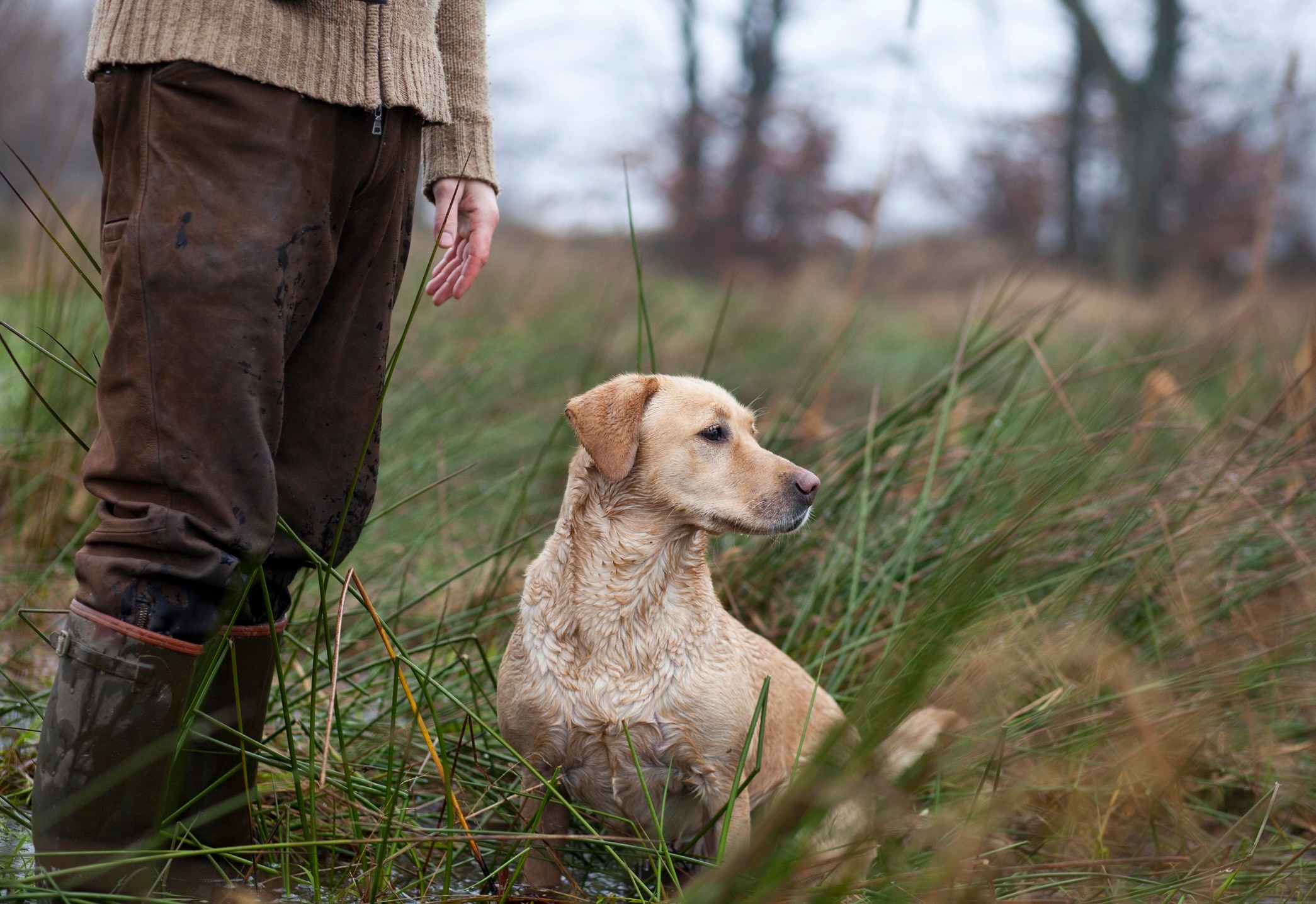
Labrador Retrievers make great family dogs. They are energetic, friendly, and love to go on adventures with their family. However, Labs need to be in an active family that will take time to play and exercise this high-energy breed. A bored Labrador can become unhappy and destructive.
The Labrador Retriever is also a high-shedding dog breed. These dogs will need consistent brushing to keep their shedding under control, but be aware that dog hair will have a permanent presence in your home.
Labrador Retriever FAQs
Is a Labrador Retriever a good family dog?
Yes, Labrador Retrievers make excellent family dogs, as they are affectionate and have the patience and tolerance to do well around other dogs and children.
Are Labradors Retrievers smart dogs?
Yes, Labrador Retrievers are considered to be one of the smartest dog breeds.
What are the different types of Labrador Retrievers?
There are three Labrador Retriever colors: yellow, black, and chocolate.
How long do Labrador Retrievers live?
The typical Labrador Retriever lifespan is 11–13 years.
Labrador Retriever vs. Golden Retriever: What’s the difference?
Labrador Retrievers and Golden Retrievers look similar, but with some noticeable differences. While there are yellow, chocolate, and black Labrador Retrievers, Golden Retrievers all have a coat that’s a shade of gold. A Labrador’s coat is also shorter than a Golden Retriever’s.
Do Labrador Retrievers shed?
Yes, Labrador Retrievers shed heavily year-round.
